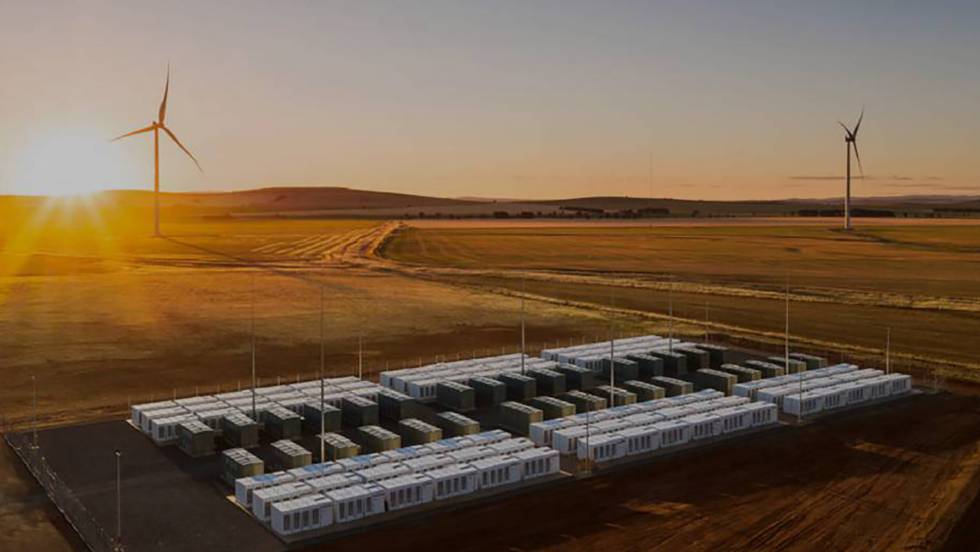
The first of all is to congratulate you on this New Year and thank you for following us every day.
I will start this year with the favorite American company (my personal opinion), Tesla Inc. and it is that this car and energy services company of Elon Musk, activated the world's largest lithium-ion battery in the state of South Australia.
The facility called Hornsdale Power Reserve, uses the same technology as Tesla car batteries, however, is powered by wind energy and its only function is to mitigate temporary outages produced on the Australian power grid.
With a single month since its installation, this enormous device (it measures about 100 meters long) has broken the record of being activated in just one seventh of a second after a blackout in the network, achieving the fastest response speed recorded so far.
This battery has a somewhat special history since Musk promised with a tweet (yes, as you read, a twitter tweet) to build the battery in March and that he would not charge to finish it if Tesla could not complete the project in 100 days after signing the contract.
This "bet" arose from the energy crisis suffered by the state of South Australia for some years now, started in 2016 when a storm it left approximately 1,7 million inhabitants without electricity.
The battery was installed adjacent to a wind farm owned by Neoen, a French company, north of Adelaide. And attention, he had 40 days left.
Battery data
It is about 100 meters long as mentioned above and It is capable of storing 129 MW / h of energy, which can discharge it with about 100 MW of power.
In a June statement on the project, Musk told Adelaide reporters that the system is:
“Three times more powerful than any other on Earth. For this reason, it is capable of supplying electricity to 30.000 homes for approximately one hour before discharging ”.
The downside of this battery is that not intended for long-term usebut to promptly recover the flow of the network when the main supplies fail.
In this way, sudden downturns are avoided while contingency systems come into action, still depending on fossil fuels.
Another drawback of lithium-ion batteries is that begin to lose charge from the first moment the power supply is turned off, keeping it for a maximum of a few weeks.
Despite this, approximately 40% of the energy produced in Australia is obtained from the wind, and it is one of the sunniest countries in the world, although it still relies heavily on fossil fuels.
This is why Griffith University researcher Ian Lowe said in New Scientist;
"Cost-effective electricity storage is the only problem that prevents us from relying exclusively on solar and wind energy."
The first actions of the Tesla battery
The Project comes at a good time since the Australian electricity grid is very prone to cuts during the summer (that is, in December in the southern hemisphere).
Mid last month the battery came into action for the first timeWhen the Loy Yang thermoelectric plant had a sudden drop of 560 MW in its supply to the grid. Having another similar event last week.
In both cases, the Tesla battery, located about 1.000 km from Loy Yang, near Jamestown, responded in a fraction of a second, thus avoiding the drop in the frequency of the network, despite not having a contract to intervene in the failures of said central.
Later, another thermal power plant that does have to respond to Loy Yang's faults activated contingency supplies.
These battery interventions show that renewable energies, and more specifically wind, can be reliable bets with a good energy storage system despite their intermittent production.
In addition, "you can easily charge the battery when there is excess power and where the cost is cheap, while discharging when the cost of production is high," explained Musk. “This lowers the average hourly price for the consumer. It is a fundamental improvement in the efficiency of the electrical network ”.